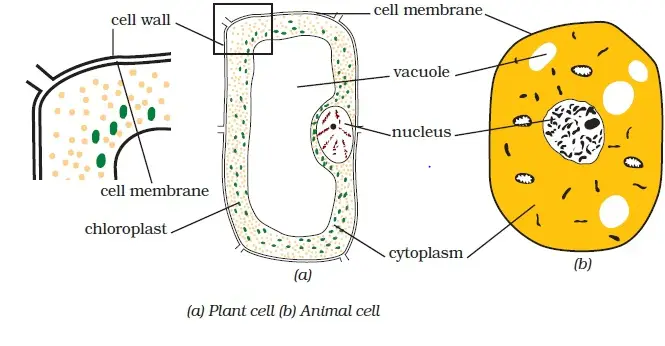

Welcome to Class 8 Science chapter 8 notes. On this page, you will find notes, questions, and answers to class 8 science chapter. These Cell structure and functions Class 8 notes, explanations, examples, and questions and answers are according to CBSE and the NCERT textbook. If you like the study material, feel free to share the link as much as possible.
Table of Content




| S.No | Animal Cell | Plant Cell |
|---|---|---|
| 1 | Smaller in size | larger in size |
| 2 | Cell membrane is present but Cell wall is absent | both cell membrane and cell wall are present |
| 3 | plastids are absent | plastids are usually present |
| 4 | Vacuoles are smaller and more in number | One large vacuole is present in the cell |
| 5 | Centrioles, centrosomes and lysosomes are present | Centrioles, centrosomes and lysosomes are absent |